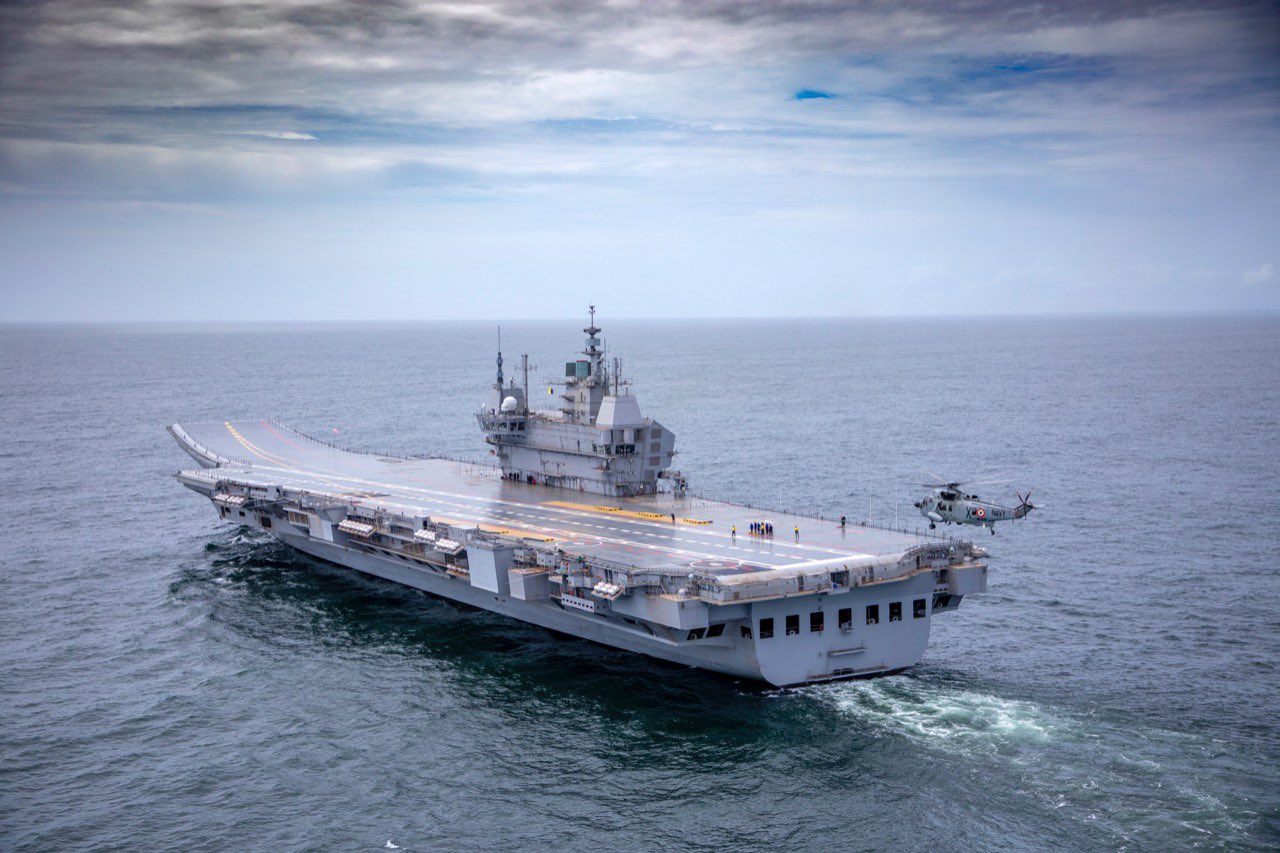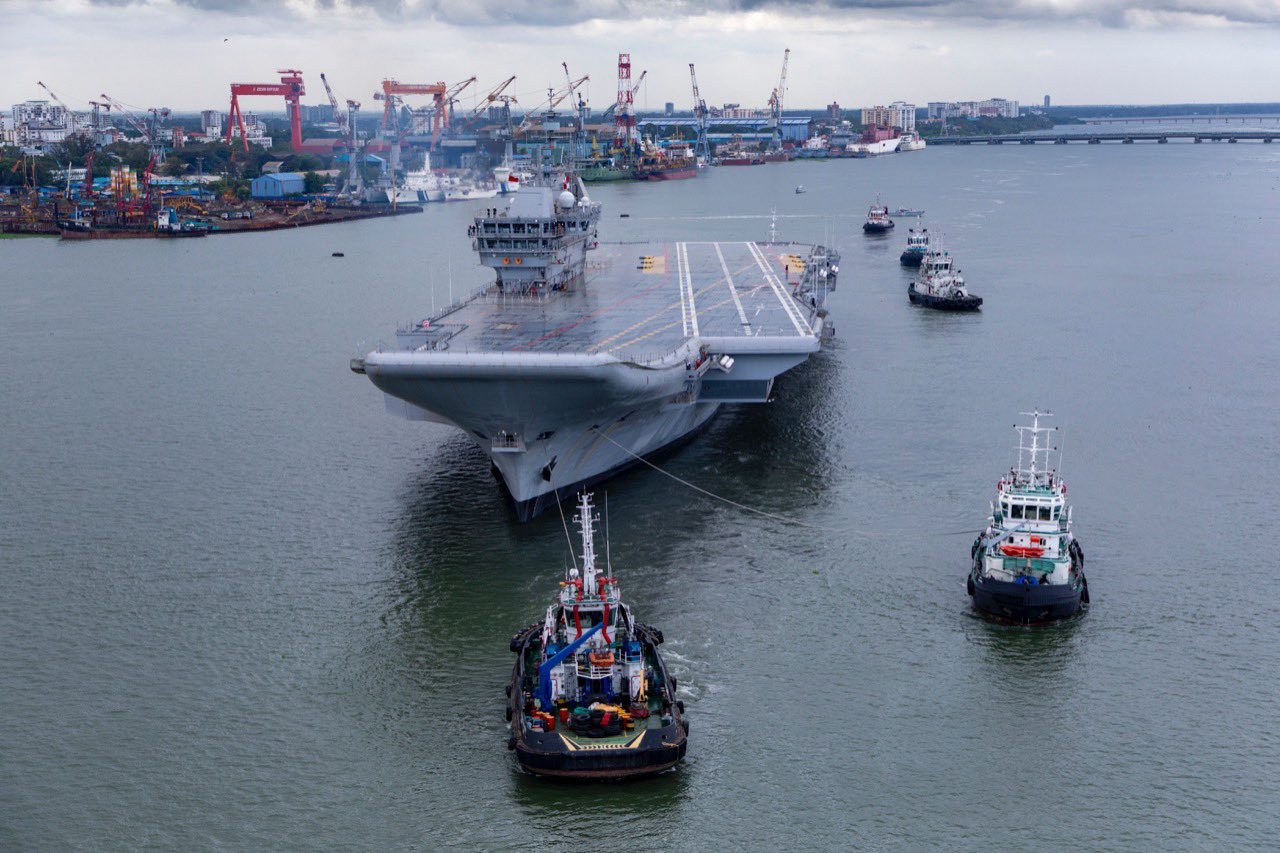India’s first ‘made in India’ aircraft carrier, INS Vikrant — also called IAC-1 — commenced its maiden sea trials on August 4. This is the pre-induction phase — aimed at testing Vikrant’s general performance and sea-worthiness.
Once commissioned, the carrier will be the second in active operations with the Indian Navy, the first being the Russian-built INS Vikramaditya.
INS Vikrant is likely to be inducted into the Indian Navy by early next year. According to the press release sent out by the Indian Ministry of Defence, Indigenous Aircraft Carrier (IAC) ‘Vikrant’ designed by Indian Navy’s Directorate of Naval Design (DND) was built at Cochin Shipyard Limited (CSL), a Public Sector Shipyard under Ministry of Shipping (MoS).
Proud & historic day for India as the reincarnated #Vikrant sails for her maiden sea trials today, in the 50th year of her illustrious predecessor’s key role in victory in the #1971war
Largest & most complex warship ever to be designed & built in India.
Many more will follow… pic.twitter.com/6cYGtAUhBK— SpokespersonNavy (@indiannavy) August 4, 2021
IAC is a leading example of the nation’s quest for “Atma Nirbhar Bharat” with more than 76% indigenous content. This is the maiden attempt of the Indian Navy and Cochin Shipyard to indigenously design and build an aircraft carrier.
The carrier is 262 m long, 62 m at the widest part and has a height of 59 m including the superstructure. There are 14 decks in all, including five in the superstructure. The ship has over 2,300 compartments, designed for a crew of around 1700 people, including specialized cabins to accommodate women officers.
The ship has been designed with a very high degree of automation for machinery operation, ship navigation, and survivability. INS Vikrant’has a top speed of around 28 knots and a cruising speed of 18 knots with an endurance of about 7,500 nautical miles. The ship can accommodate an assortment of fixed-wing and rotary aircraft.

Most of the ship’s construction work has been completed and it has entered the trials phase. The readiness of the ship’s propulsion and power generation equipment/ systems was tested in the harbor as part of basin trials on November 20, 2020.
The progress of the carrier’s construction was reviewed by Defense Minister Rajnath Singh on June 25. The sea trials, which were delayed due to the second wave of COVID-19 pandemic, commenced due to “dedicated efforts of a large number of workmen, OEMs, engineers, overseers, inspectors, designers and the ship’s crew, who had put their heart and soul towards the ship’s readiness for sea trials”, the release said.
“Reaching this milestone is significant as they have been achieved barring the current pandemic challenges and imponderables. During the maiden sailing, the ship’s performance, including hull, main propulsion, PGD, and auxiliary equipment would be closely watched,” MoD said.

With the delivery of IAC, India would join a select group of nations with the capability to indigenously design and build an aircraft carrier, which will be a real testimony to the ‘Make in India’ thrust of the Indian Government, it said.
“The Indigenous construction of an Aircraft Carrier is a shining example in the Nation’s quest for ‘Atma Nirbhar Bharat’ and ‘Make in India Initiative’. This has led to growth in indigenous design and construction capabilities besides the development of a large number of ancillary industries, with employment opportunities for 2000 CSL personnel and about 12000 employees in ancillary industries,” according to MoD.
Like Vikramaditya, INS Vikrant is also expected to carry around 30 fixed-wing and about 10 rotary-wing aircraft. While no decision has been made yet for new fighter jets, the Vikrant will initially carry the MiG-29Ks.
The Vikrant had completed the basin trials towards the end of 2020. The IAC bears the same name as that of the legacy aircraft carrier INS Vikrant, a British-built Majestic Class carrier that was decommissioned in 1997 and subsequently scrapped in 2014.
The old carrier had played a key role in enforcing the naval blockade of East Pakistan during the 1971 India-Pakistan war, also known as the Bangladesh Liberation war.
Penned By Kashish Tandon




